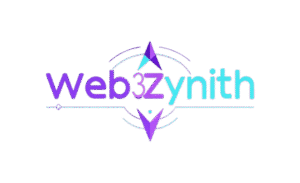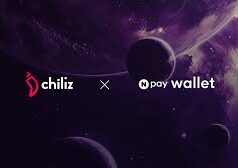As blockchain adoption grows in 2025, conversations around scalability, speed, and user experience have become increasingly important. Central to this discussion is the distinction between Layer 1 and Layer 2 blockchain solutions. These two layers serve different purposes but are deeply interconnected in solving blockchain’s most persistent challenge: scaling without compromising security or decentralization.
If you’ve ever wondered what makes Ethereum Layer 1 different from Arbitrum or Optimism Layer 2s—or why Bitcoin doesn’t scale easily—this post will clarify the difference and help you understand why both layers are essential for the future of blockchain.
The Blockchain Scalability Trilemma
Before diving into the layers, let’s address the root problem they’re designed to solve: the blockchain scalability trilemma.
According to Ethereum co-founder Vitalik Buterin, a blockchain can only optimize two out of three of the following:
Security
Decentralization
Scalability
Layer 1s tend to prioritize security and decentralization but often sacrifice scalability. That’s where Layer 2s come in—to boost performance without compromising the underlying protocol’s trust model.
What is Layer 1?
Layer 1 (L1) refers to the base blockchain architecture. It includes the core rules, consensus mechanisms, and security model that define how the network operates.
Examples of Layer 1 Blockchains:
Bitcoin
Ethereum
Solana
Cardano
Avalanche
BNB Chain
These networks process transactions directly on-chain and are responsible for validating and recording every block.
Key Features of Layer 1:
Handles security and decentralization
All transactions are final and immutable
Typically slower and more expensive as network usage increases
Protocol-level updates required for improvements (e.g., Ethereum’s Merge to Proof of Stake)
What is Layer 2?
Layer 2 (L2) refers to off-chain solutions or protocols built on top of Layer 1 to improve scalability and transaction throughput. They rely on the security of the underlying L1 chain but process transactions externally and then settle results back on L1.
Examples of Layer 2 Solutions:
Arbitrum (on Ethereum)
Optimism (on Ethereum)
Polygon PoS/zkEVM (sidechain and zk-rollup)
StarkNet and zkSync (zero-knowledge rollups)
These solutions batch multiple transactions into one, drastically reducing fees and increasing transaction speeds while anchoring their state to the L1 chain for trust.
Key Features of Layer 2:
Higher transaction throughput
Lower gas/transaction fees
Minimal changes to the base Layer 1 protocol
May require bridges to transfer assets between L1 and L2
Layer 1 vs Layer 2: Feature Comparison
Feature Layer 1 Layer 2
Definition Base blockchain network Secondary framework built on top of L1
Speed Slower Faster
Fees Higher Lower
Security Native Inherits from L1
Upgrade Process Complex and slow Agile and modular
Examples Bitcoin, Ethereum, Solana Arbitrum, Optimism, zkSync
Real-World Analogy
Think of Layer 1 as a highway, and Layer 2 as express lanes or side roads built to relieve congestion. While all cars must eventually return to the main road (settlement on L1), Layer 2s allow traffic (transactions) to move faster and more efficiently during peak hours.
Why It Matters in 2025
With mass adoption of crypto apps, games, and DeFi, networks like Ethereum face increased pressure. Without scalable solutions, gas fees skyrocket, and transaction speed drops—a poor user experience.
That’s where Layer 2s are transforming the game in 2025:
Massive cost reductions: $0.02–$0.05 per transaction vs. $5–$50 on Ethereum L1.
Instant finality: Transactions confirmed within seconds.
Expanded use cases: NFTs, micropayments, gaming, and identity systems can thrive without fee barriers.
In fact, Ethereum’s long-term scaling roadmap relies heavily on Layer 2 adoption—with the L1 serving as a settlement and security layer, and L2s handling the user interaction layer.
Key Use Cases of Layer 2 in 2025
DeFi Protocols: Uniswap and Aave now support Arbitrum and Optimism, providing cheaper trades.
Blockchain Gaming: Games like Illuvium and Gods Unchained use Layer 2 to offer instant, low-cost gameplay.
Payment Solutions: zk-rollups enable microtransactions for content creators and tipping systems.
Enterprise Apps: Supply chain, logistics, and document verification systems use Layer 2 to scale affordably.
Layer 1 Is Still Essential
While Layer 2 steals the spotlight for performance, Layer 1 is the foundation of trust. All state changes on L2 eventually settle on the base chain, ensuring security and decentralization remain intact.
Think of L1 as the Constitution, and L2s as state laws—faster to change, but still governed by the core protocol.
Future Outlook: The Merge Between Layers
In 2025 and beyond, we expect:
Greater interoperability between L1 and L2
Standardized bridges for seamless transfers
Native L2 wallets built into major crypto platforms
More L2-native apps that never touch L1, but settle there periodically
The distinction between L1 and L2 may start to blur—users won’t need to know which layer they’re on. They’ll simply enjoy fast, cheap, and secure blockchain experiences.
Understanding the difference between Layer 1 and Layer 2 is critical to navigating the current and future blockchain ecosystem. While Layer 1s provide the security and trust foundation, Layer 2s bring the performance needed for real-world adoption.
In 2025, as the crypto industry continues to scale, this two-tiered structure will be the key to onboarding billions of users into the decentralized future.



























